While their stomach contents prove that some of their last meals included woolly rhino and a small bird called a wagtail, experts still aren't sure how they died, though some think they may have been trapped when their underground den collapsed.
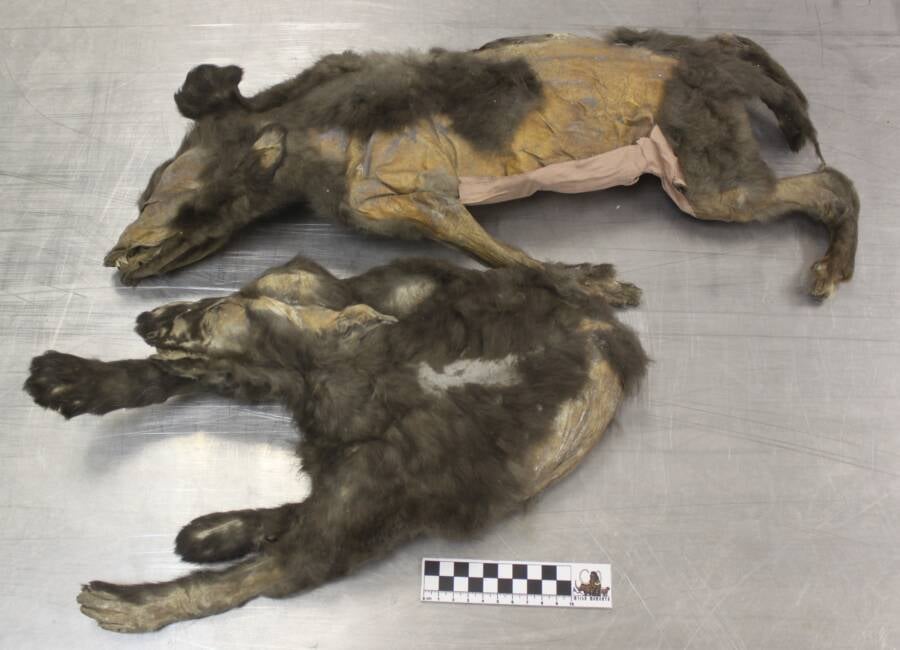
Sergey Fedorov/Mammoth Museum of North-Eastern Federal UniversityThe wolf cubs were originally unearthed in Tumat, Siberia in 2011 and 2015.
The remains of a pair of well-preserved prehistoric canines found in northern Siberia in 2011 and 2015 have now been identified as wolves – not dogs, as previously thought – following a newly-released study from Cambridge University Press.
This pair of wolf puppies, which turned out to be sisters, is more than 14,000 years old. While much still remains unknown about these cubs, researchers have been able to uncover information about their diet and how they may have died, adding to the picture of what the animals of planet Earth were like thousands of years ago.
The Discovery Of The Prehistoric Canines Preserved In The Permafrost Of Tumat, Siberia
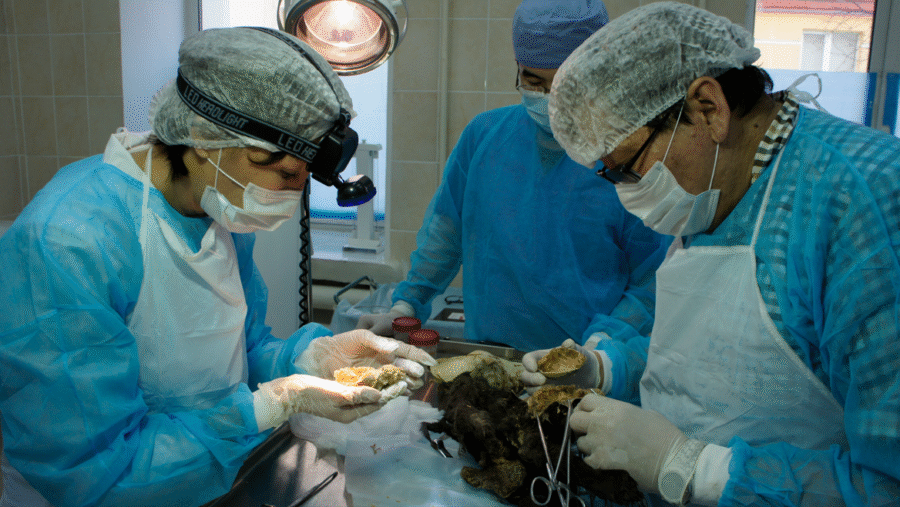
Sergey Fedorov/Mammoth Museum of North-Eastern Federal UniversityScientists conduct an autopsy of the two wolf cubs.
The pair of young wolf sisters, now determined to have been two months old at the time of their deaths, were unearthed independently of each other in 2011 and 2015. Initially, it was thought that they may have been domesticated dogs.
They were found at the Syalakh site, almost 25 miles away from the closest village in northern Siberia, Tumat.
The pair had been preserved in ice under layers of soil. Along with the wolves, researchers also found woolly mammoth bones that showed signs of being burned and processed by humans.
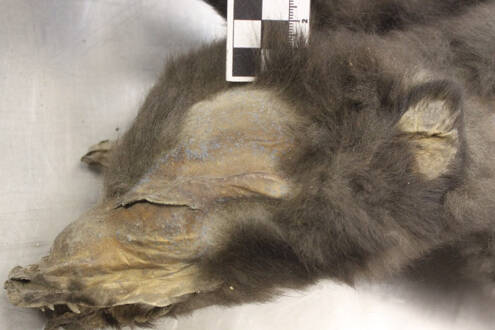
Sergey Fedorov/Mammoth Museum of North-Eastern Federal UniversityTheir skin and fur was completely intact even after at least 14,000 years.
This led researchers to believe that it was possible that the site was a location where humans butchered woolly mammoths. The remains of these suspected early dogs or tamed wolves indicated a possible domestic bond between canines and prehistoric humans.
However, the pair of canines showed no evidence of having eaten the woolly mammoths, despite being found near that animal’s bones. Researchers then used this information to lead them to the conclusion that the canines were actually wolves and not dogs.
How The Puppies’ Diet Led To The Discovery That They Were Actually Wolves
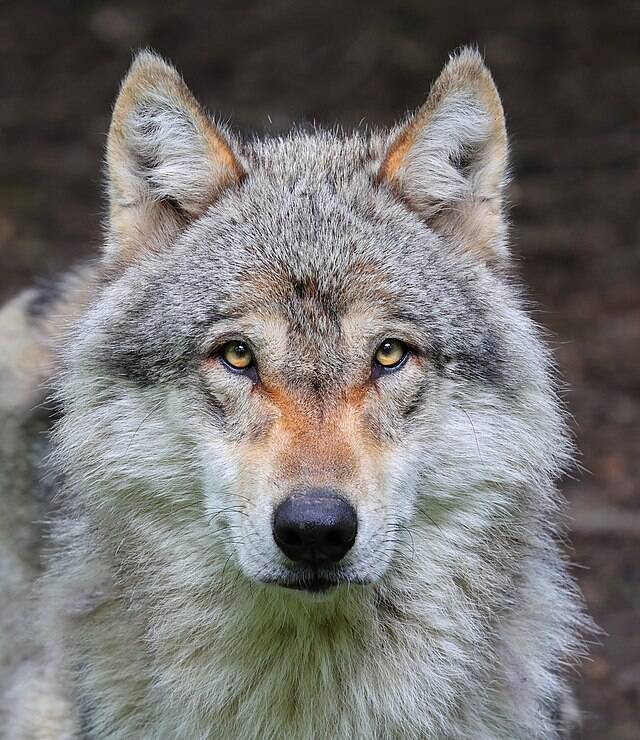
Wikimedia CommonsThe wolf cubs were determined to be genetically similar, though not identical, to the wolves of today.
A new study from the University of York took a deeper look at the remains of the animals. Specifically, they examined their stomach contents, genetic data, as well as their bones, teeth and tissue.
“It was incredible to find two sisters from this era so well preserved, but even more incredible that we can now tell so much of their story, down to the last meal they ate,” said Anne Kathrine Runge, an archaeologist at the University of York.
It was learning what types of food the animals ate that led to the discovery of them really being wolves.
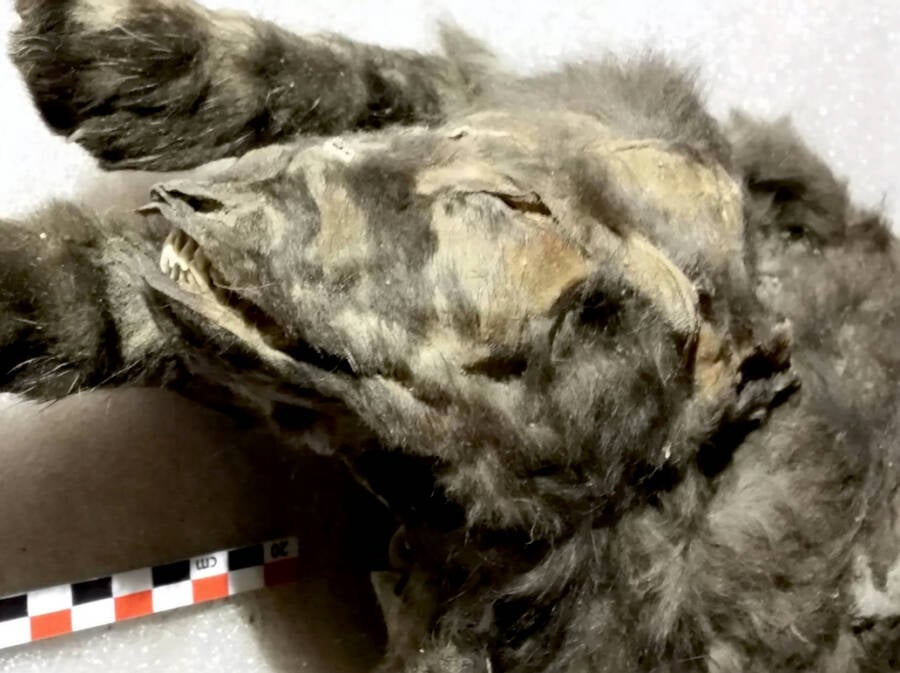
Mietje Germonpré/Royal Belgian Institute of Natural SciencesThese wolves were sisters who were just a few months old and still nursing from their mother when they died.
Along with showing signs of nursing from their mother, the pair appeared to be omnivores. Researchers found solid foods like woolly rhinoceros meat and wagtail, a small bird, in their stomachs. The theory goes that, if they had been domesticated dogs, their human companions would have been fed them the same mammoth meat that they were eating.
“Whilst many will be disappointed that these animals are almost certainly wolves and not early domesticated dogs, they have helped us get closer to understanding the environment at the time, how these animals lived, and how remarkably similar wolves from more than 14,000 years ago are to modern day wolves,” Runge explained.
A diverse range of plant remains were also found in the animals’ stomachs, suggesting the environment they lived in was ecologically diverse and contained many different plants and animals to eat.
Other Prehistoric Animals Found Intact In The Siberian Permafrost
These wolf cubs are far from the only prehistoric animals to have been found in the Siberian permafrost in recent years.
The remains of a 40,000-year-old extinct species of horse was found there in 2018, and was the first discovery of its kind.
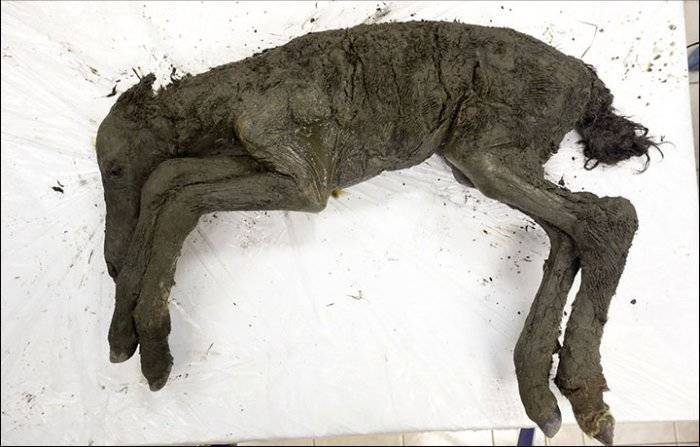
Michil Yakoklev/North-Eastern Federal UniversityThis 40,000-year-old extinct foal was also found in the Siberian permafrost in recent years.
A 40,000-year-old, perfectly-preserved wolf head was also found in the permafrost. The head was larger than half the body length of a modern-day wolf. Researchers have also found the remains of a prehistoric bison and a prehistoric bird, both remarkably well preserved.
While the Siberian permafrost has revealed many exciting clues about Earth’s prehistoric past, there is still much more to be discovered.
After reading about these prehistoric wolf cubs, learn about the discovery of a mummified wolf pup and caribou from the Ice Age in Canada. Then, learn about scientists’ efforts to bring the woolly mammoth back from extinction.





